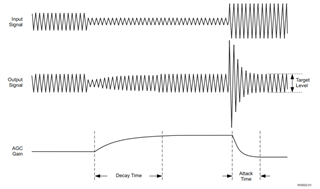Tool/software:
HI TI ,
The gain is too low during microphone recording. If there is obvious background noise after turning on AGC.
I would like to ask if there are any other configurations for increasing the microphone gain.
I use the following command to call for microphone recording, and only the AMICL channel is needed.
tinymix set "AGC Switch" 0 0
tinymix set "ADC HPF Cut-off" 1 1
tinymix set "Left Line Mixer PGAL Bypass Switch" 1
tinymix set "Left HP Mixer PGAL Bypass Switch" 1
tinymix set "Left Line1L Mux" 1
tinymix set "Left PGA Mixer Line1L Switch" 1
tinymix set "Right Line Mixer PGAR Bypass Switch" 0
tinymix set "Right HP Mixer PGAR Bypass Switch" 0
tinymix set "Right Line1R Mux" 0
tinymix set "Right PGA Mixer Line1R Switch" 0
tinycap /home/sunrise/cap.wav -D 0 -d 0 -p 320 -n 3 -r 48000 -b 16 -c 2



